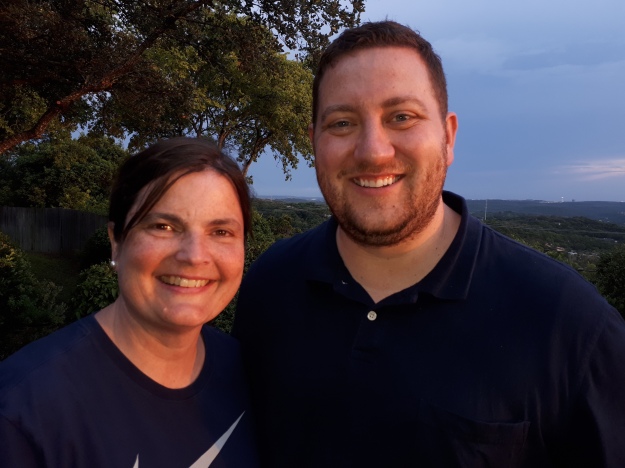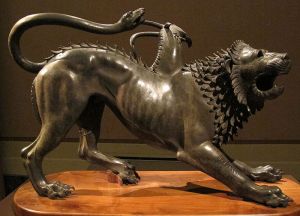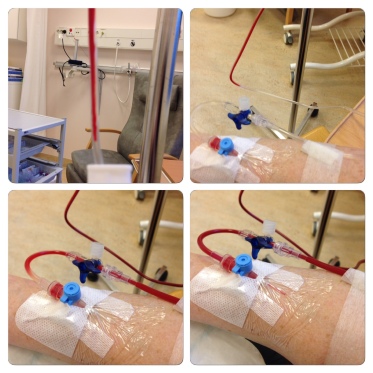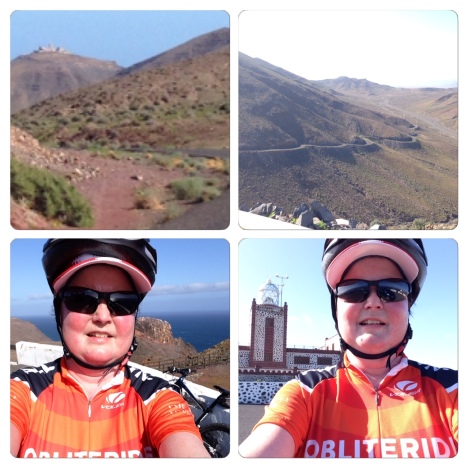I spent the time since my last blog on the transfer from Seattle to Oslo, following the youngest at school start and being all five closely together again in our own home. I see now that my improvement has given new life also to my kids and husband – more than I could predict – I love it.
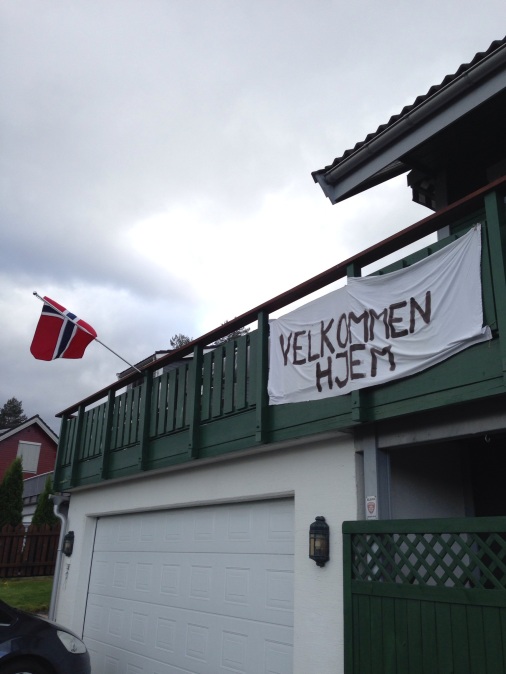
Part of the warm welcome by our neighbours- Thanks!
It’s great to be back at the Oslo University Hospital (Rikshospitalet).
I was a little worried about the transfer from SCCA in Seattle to Rikshospitalet Oslo. But – for no reason :-).
My hematologist at Rikshospitalet took me in already two days after I landed in Oslo. He studied the pile of documents on me from Seattle and continued where SCCA left off, without any “bumps”. The post transplant monitoring and treatment now performed at Rikshospitalet is a critical part, since I may still develop serious GVHD and infections. I am in the good hands of a thorough and hard working doctor, also now. The transfer and cooperation between SCCA and Rikshospitalet is really seamless.

Oslo University Hospital- Rikshospitalet
Once a week, I have blood draw, checks by the hematologist and evaluation whether to change the medication – very much like at SCCA. So far the hematologist and I are happy – no signs of serious transplant complications.
I am still doing fantastic – especially compared to pre-transplant: Energy level is high and pain is low. I have some mild “sub-clinical” indications of GVHD i my stomach and I am sometimes bloated – but this is nothing compared to my Crohns pre-transplant. Now, I get up early in the morning, run the family, exercise, eat dinner, have regular bathroom frequency and no vomiting – where I come from all of this is luxury!
Here is a more detailed medical update: I start with my last consultation in Oslo, and work my way backwards.
Day 117: Latest consultation
I do better when I cut out lactose and eat a low-fiber diet. The hematologist was actually happy with this, since some of my symptoms the last few weeks resembled Graft-Versus-Host-Disease (GVHD).
The doctor called me afterwards and said that my magnesium levels now were only a tiny little bit below the normal range, and the absorption of Taclolimus had picked up. Tacrolimus is an immunosuppressant that prevents GVHD.
Day 110: Second consultation in Oslo
I had started taking iron, and I had been trying to add a little more regular milk (lactose) and fiber. That was not a good idea. I had gas pains and diarrhoea a couple of days. The doctor told me to stop taking iron, since I had enough of it to make blood cells.
He called me the same day and said that the magnesium levels had gone up a little, and Tacrolimus also.
Day 103: First post-transplant clinic with the Norwegian hematologist
The first stop was a blood test. At Rikshospitalet transplant patients get these done in a special area, so that they don’t need to wait among all other patients who may have sniffles and sneezes or other possible contageous germs – this system made me happy. My immune system is still not strong enough to fight infections effectively, and in addition I still take immunosuppressive drugs so that the new immune system does not attack my own cells in my organs (graft versus host disease, GVHD).
It was good to see the hematologist again. He had been reading my blog! He had just been sent the whole protocol, but he already had memorized the most important details.
I liked the thoroughness of this Rikshospitalet doc. He also called me personally later that afternoon to discuss the blood results. And he agreed with the transplant doctor at SSCA that I could start swimming in a pool.
Medical conclusion: I am still quite low on magnesium, and I will increase the tablet intake. The level of Tacrolimus (immunosuppressant) had risen to a desirable level.
Day 98: Meeting with the protocol team
They were all present: Investigators Dr. McDonalds (GI specialist), Dr. Georges (Cell Transplant specialist), and Christine Kane and Bernie McLaughlin.
We talked about how well this whole process has gone, from the time we initially seeked contact until this day. We said once more how impressed we have been by the way the transplant teams work together. How the teams make medical decisions. We talked especially about that time the decision was made to go forward with the transplant, even though I had had an activation of coronavirus.
The biopsies taken during the enteroscopy at day 84 indicated possible mild GVHD in my stomach.
I have had a couple of days where I felt really full, and a little nauseous, but that was shortly after the enteroscopy and I just thought it was because I felt a little ‘beaten up’ because of the procedure and the biopsies they took.
However, my symptoms are very mild and considered “sub-clinical”. The transplant team decided to send me home with a bottle of a special medicin that they make at the pharmacy of Seattle Cancer Care Alliance. It’s a topical steroid called beclomethasone, which is mixed into corn oil. It is supposed to work well on mild GVHD in the upper parts of the gastro-intestinal tract. It doesn’t give all the nasty side-effects of prednisone (the steroid pills that do much good, but also a lot not-so-good).
I took this medicine on days 101 and 102, when I felt bad after the travel, but I really don’t have any symptoms, so I stopped on day 103.
According to the records, my high pain levels from pre-transplant lasted until approximately one month after the transplant. Then they started becoming less frequent and lower. The enteroscopy at day 84 showed remarkably healing of ulcers and stricture. The transplant team said the type and course of healing they saw is unlikely to be caused by the immunosuppressive drugs and radiation alone. The healing appears to be intercelluar and with contribution from the new immune system. This is promising even if it is early in the follow-up and the primary endpoint of the trial is 1 year after transplant. However, I am optimistic since all known cases of such allo-HCT have permanently cured Crohn’s (see my scientific rationale).

Preparing for showering with a Hickman central line
Day 97: Hickman removal
At the clinic visit this day, my Hickman central line was removed. A bittersweet goodbye. It’s fantastic to be able to just jump into the shower again, without first wrapping the ports up, and hide the dressing under Glad Slap-on-Wrap, but I am thankful to have been able to receive hydration, medication and intravenous food through this line. No poking needles for almost three months!
We said goodbye to the transplant team. Pat, my nurse has been the solid rock of my transplant. She’s experienced, knowledgeable but also funny and not afraid of saying what she means.

My Tan Team transplant nurse Pat and I
Day 95: Discharge summary
This consultation was a brief summary of the treatment, and we received instructions for further follow-up. Again: What signs do we need to be on the look-out for.
The attending transplant doctor was not concerned about me swimming in a pool. She also approved a stay in the Canary Islands in February next year, if I had no symptoms. However, it would be wise to bring some extra drugs to start treatment of potential infections etc early.
We ordered a week’s holiday at Fuerteventura that same evening 🙂
Day 89: Oral medicin and eye exam
The dentist confirmed that my mouth still looks good. I promised to take extra good care of my lips, since I had a tiny crack, and we don’t want cracks, because they can be the entry point of germs and infections.
They showed me horrible pictures of GVHD in the mouth, and I promised to look for signs of it myself, and take contact if my dentist here in Norway has questions.
I had an eye exam. This was not part of the discharge procedures, but something I ordered by myself. The eye doctor confirmed what I had suspected for a while: I have an extensive cataract (grå stær/grauwe staar) in my left eye. She also said something I had not expexted: my right eye shows the beginning of development of a cataract.
In the meantime I have talked to several doctors about this. I will try to wait another year before I get that cloudy lens replaced. However, if it starts impairing my vision to the point of not being able to drive a car safely for example, I can get it done before.
Day 83: Pulmonary function
I did exactly the same lung function tests as before the transplant, with approximately the same results, which is good.
Day 82: Medical photography and gynecology
Medical photography was fun, actually. They took pictures of the flexibilty of many of my joints. GVHD can make the joints stiff, and to be able to compare ‘before’ and ‘after’ I needed to get this ‘before’ photoshoot done.
 This picture of medical photography is taken from this website of the Hutch
This picture of medical photography is taken from this website of the Hutch
Gynecology went well. I was told that my blood tests showed that I am now officially post-menopausal. The chemotherapy and the irradiation have caused sterility, as expected. I hardly make any female hormones anymore. I slammed through the menopause (overgangen/de overgang), with possible years of hot flushes and other symptoms.
The female hormones don’t only keep fertility going, but have all sorts of positive effects on other organs like the bones, breasts, heart and uterus. I therefore take hormone therapy in the form of a tablet of estrogen, and the Nexplanon skin implant (which I have had since June 2013).
Day 81: Dexa, x-ray and nutrition
Dexa is the machine that measures bone mineral density (‘how strong the bones are’). They measured my hips and my spine. The spine was at 87% of what it should be. The high doses of prednisone that I have been taking pre-transplant are known to cause reduced bone density.
I take calcium and vitamin D to make the bone stronger, and I will add exercises with weights, for instance taking a hike with a backpack, or doing squats with extra weights.
X-ray of the chest: Normal
Nutrition: My daily goal for calories was 2000, and this was lowered a little bit to a range of 1706-1950, depending on activity. The goal for protein is still 92 g/day. I can start introducing more fiber to my diet.
I can say today that introducing fiber should be done gradually. I made the mistake of eating 4 baby carrots and a handfull of almond M&Ms, on the day after the enteroscopy/colonoscopy, and I was in agony the whole day.
Conclusion of this post
I am doing well. I love being able to do so many things I wasn’t able to do just a year ago, examples:
– My sister came to visit and I didn’t have to sleep during the day.
– Tomorrow we will have guests for dinner
– Next week I will go swimming 🙂
